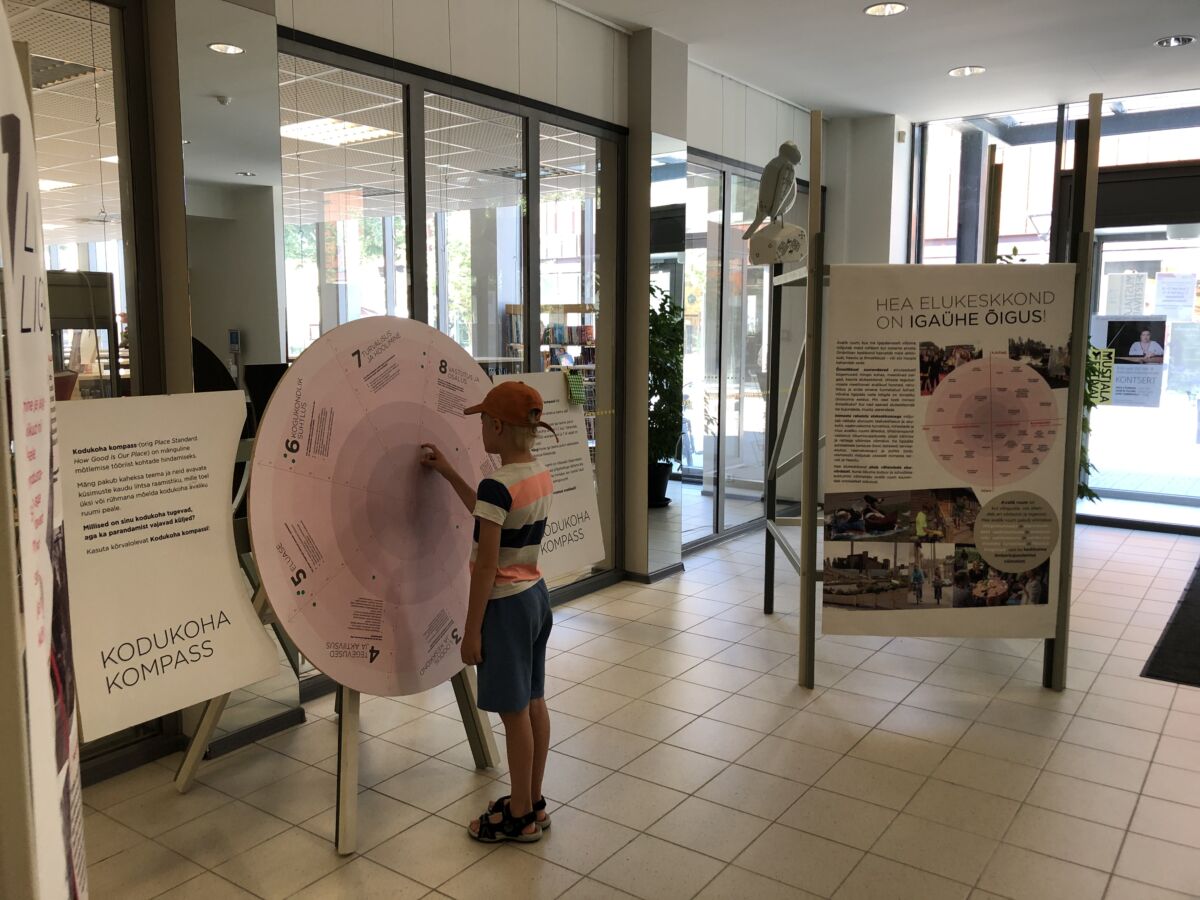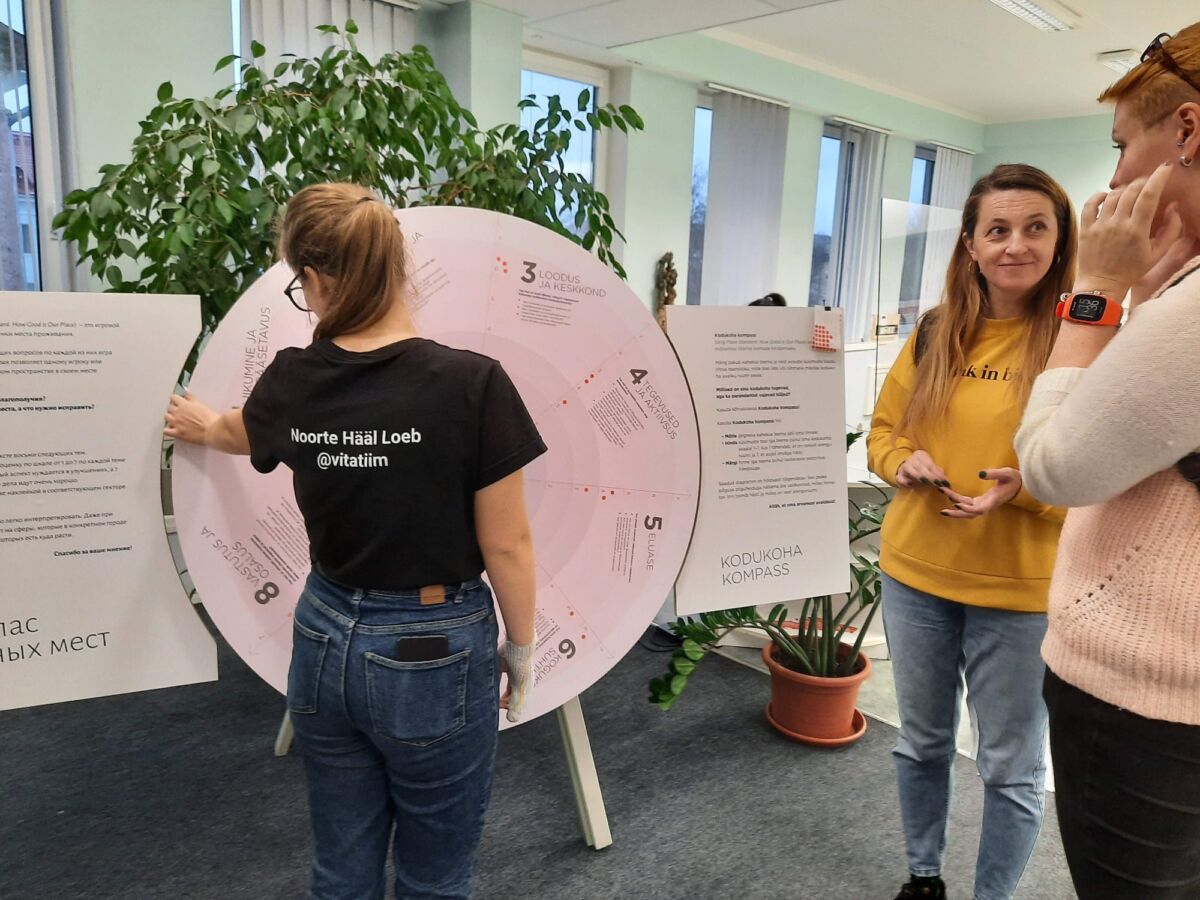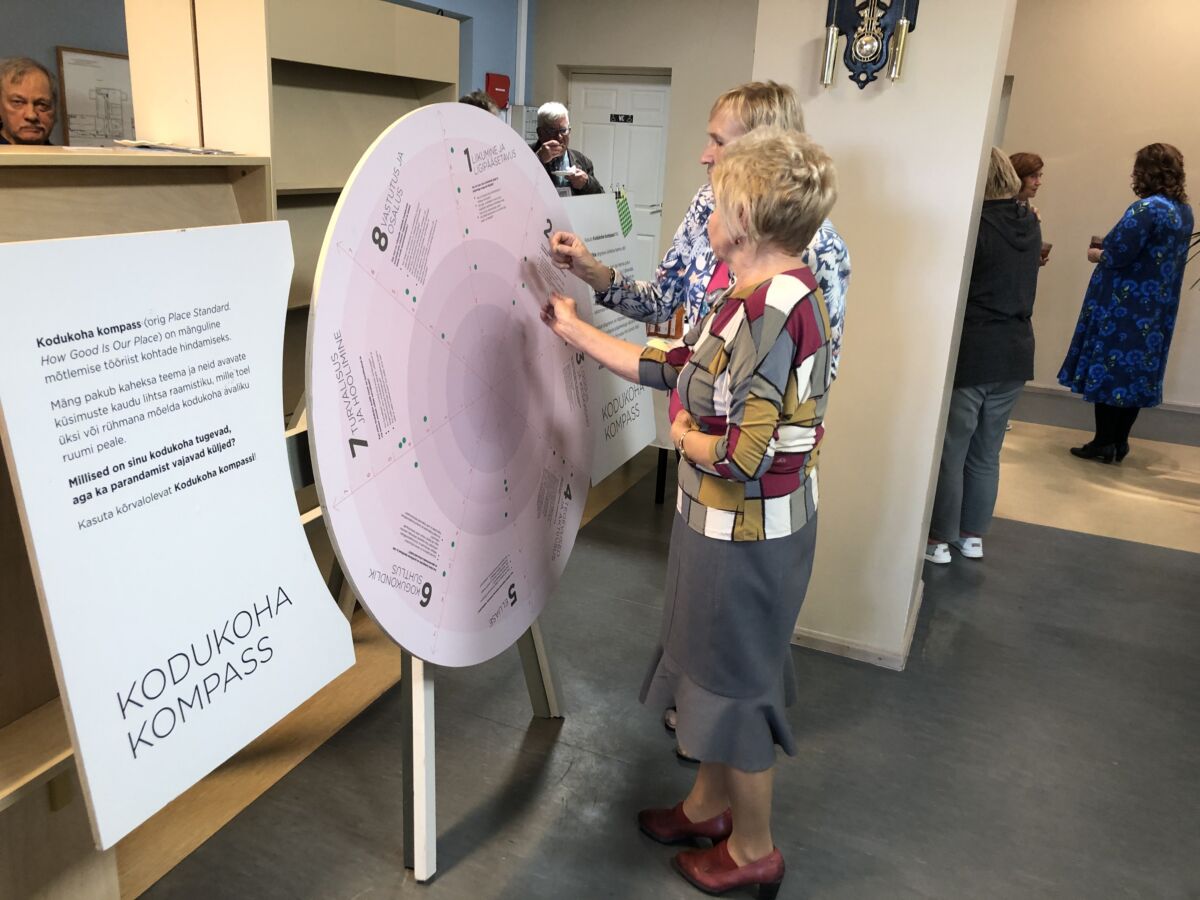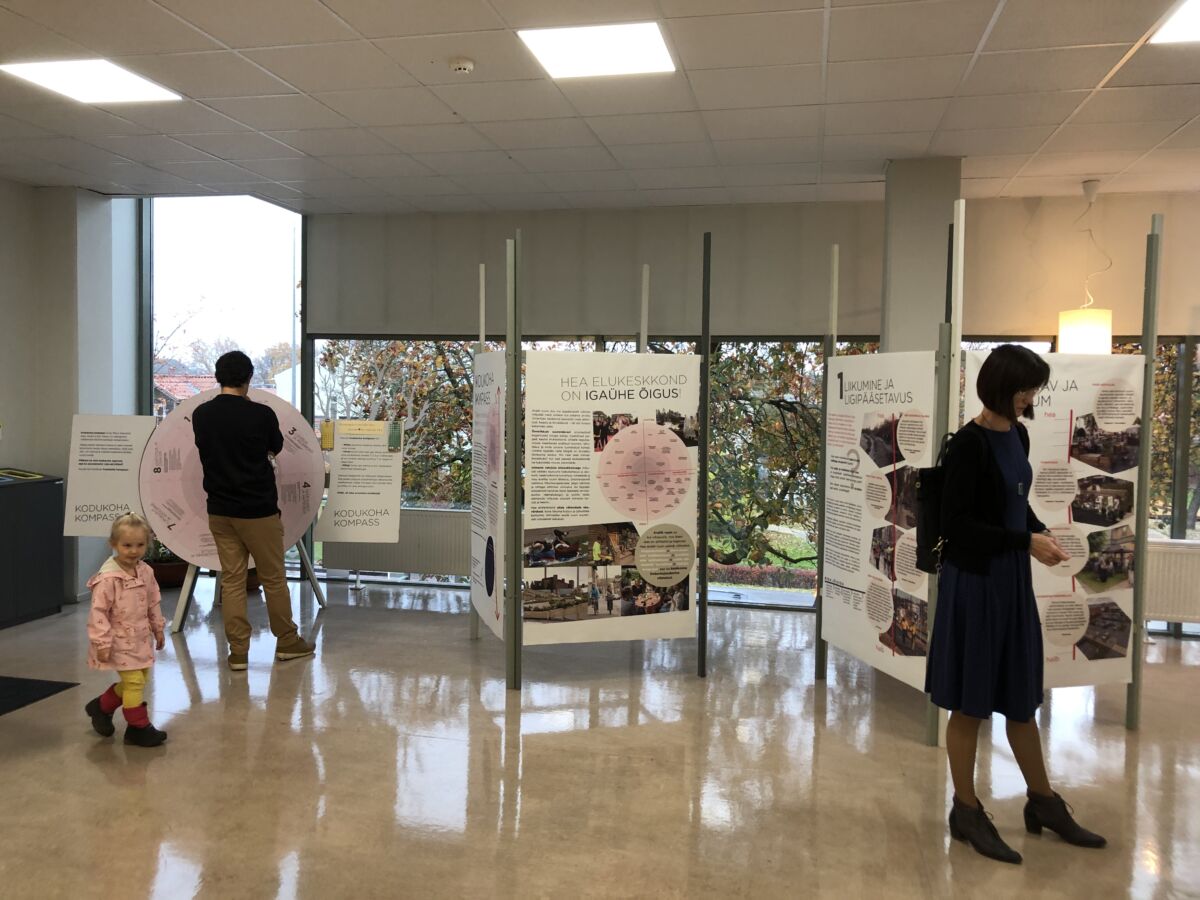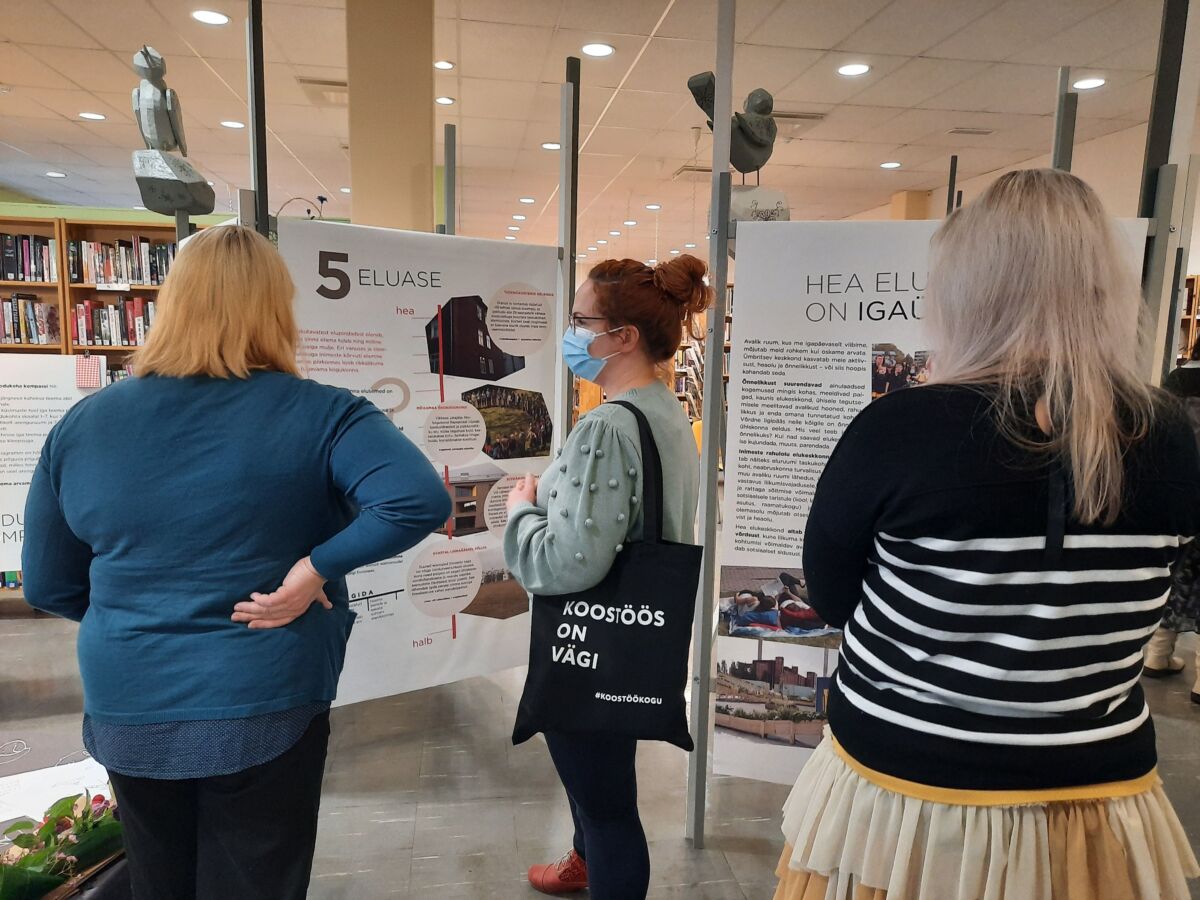Hometown Compass
What makes a space (a city, district, village, street or central square) a pleasant place where people want to be? How does this space impact our health, well-being and happiness? But also, the economy and attractiveness of the region? The Estonian Cooperation Assembly’s exhibition “Hometown Compass” (2020-2021) searches for answers to these questions.
The aim of the exhibition was to inspire the initiation or continuation of discussions, think tanks, spatial experiments and initiatives related to the topic of a prosperous living environments. We wish to support the spread of science-based principles related to space creation at the local level.
The exhibition was inspired by the Estonian Human Development Report 2019/2020 called Spatial Choices for an Urbanising Society, which was published at the beginning of last summer and focused on Estonian spatial development and its impact on people’s well-being and social processes. We all use public space. It is the space for moving from one place to another, the space for being outdoors, the space for communication. The nature of the living environment around us influences our behaviour. A pleasant, safe and attractive space increases people’s activity, well-being and happiness. The opposite – reduces it.
In recent years, with the help of the Estonian Architects’ Association’s Good Public Space programme, new and attractive urban spaces have been built in Estonian small towns. Now that the town squares have been built, the locals need to think about how to proceed. These squares will only be filled with life if people want to spend time there. But what makes a space into a place where people want to spend their time?
The exhibition featured eight themes that will help cities create good places. In addition, the exhibition is accompanied by a practical compass (originally called the Place Standard. How Good Is Our Place?). This is an award-winning, freeware methodology that provides locals with a simple framework for assessing the quality of the public spaces in their hometowns and organising discussions about space.
EXHIBITION TEAM:
Curator: Kairi Tilga, Estonian Cooperation Assembly
Author/experts: urbanists Teele Pehk and Elo Kiivet
Language editor: Mari Klein
Designer: Mae Kivilo, Tiib OÜ
Partners: Estonian Librarians Association
Sponsor: Estonian Ministry of Culture, Cultural Endowment of Estonia
Producer: Estonian Cooperation Assembly, 2020

